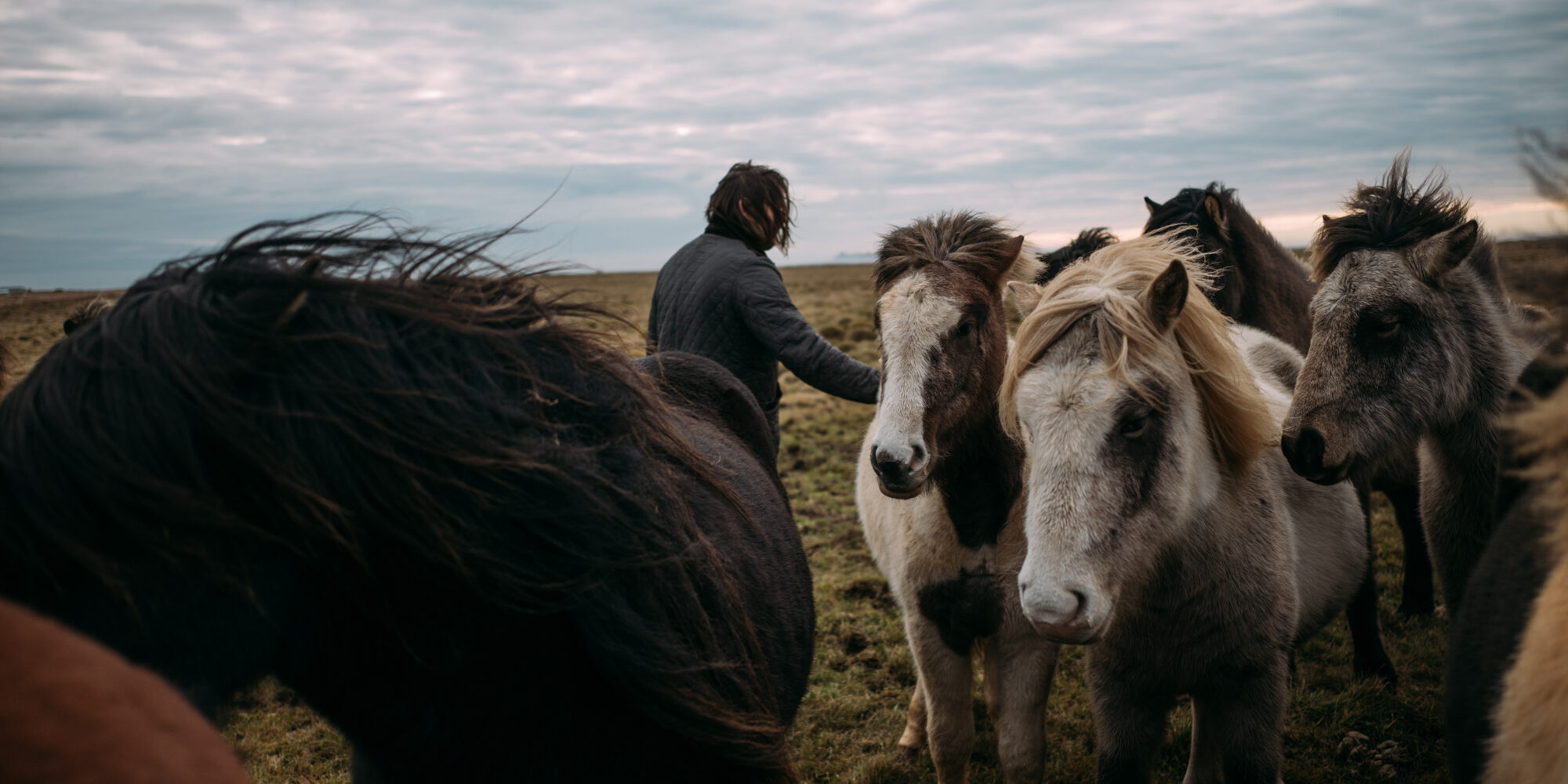Iceland is a wilderness and nature-based tourism destination beyond par. Tourists visiting the country is particularly attracted to exotic landscapes, natural phenomena (glaciers, geysers, volcanos), and unique encounters with iconic Icelandic horses.
Home to around 350,000 people and more than 90,000 equids, riding and horse breeding are deeply embedded elements of Iceland’s cultural heritage. Despite their small stature, Icelandic horses have incredible stamina and perseverance, making them the perfect breed to use for equine tourism, which is one of the most popular tourist activities in Iceland.
Partly due to an increased interest in wild “bucket list” type adventures on social media, thousands of tourists seek out equestrian activities while visiting Iceland every year.
The popularity of equine experiences is evident by the multitude of operators and offers available – but which riding stable should you choose?
Ensure good welfare
While guest safety is important, the welfare and well-being of Icelandic horses should always come first when choosing a horseback tour.
For many visitors, it’s not easy to understand when a horse is unhealthy, in pain, or lacking basic care, so here are three ways to identify the good guys (and girls) in the industry and ensure you take a ride with someone that promotes horse welfare and responsible tourism and not one that perpetuates animal abuse in the name of a quick buck.
1. Healthy, happy horses
If when you arrive, the horses are unsaddled, you can look to see if they have any wounds on their backs or where the girth lies. Condition is important too. Trail horses are usually not overweight but should not show protruding bones around the hips and ribs either.
The horse’s hooves are very important and should not have cracks or chunks missing.
Unbalanced, overgrown, or poorly cared for feet can cause discomfort and lameness.
Horses are sentient beings that can feel happiness, sadness, anger, and stress just like us.
Unlike us though, they cannot communicate verbally, so watching their body language is the best way to understand how they are feeling.
A happy horse will look relaxed. Instead of a tense, pulled expression, he will have soft nostrils, floppy ears, and a relaxed tail. His jaw will be loose, and he may have a droopy bottom lip or drool!
On the other hand, an unhappy or afraid horse might swish his tail around, have a pinched, pained expression, and have elongated nostrils or ears laid flat against the neck.
2. Friendly, welcoming hosts
Nobody wants to ride with a sullen-faced guide. Your host should take an interest in you as an individual and listen to what you want to achieve from the experience, rather than just see you as another paying customer to be put on a horse and trotted around for half an hour.
Watch how your host behaves around their horses. Are they treated like colleagues or as beasts of burden? A good horseman or woman knows how to speak to their horses without words, and an observer can instantly pick up on their unique body language.
3. Good vibes
Upon arrival, the atmosphere at the operator should be calm. There should be no tension or yelling (without good reason), and the horses, people, and animals (including dogs and cats) should seem calm, relaxed, and well-cared for.
The fencing and stables should be neat and in good condition, and any farm equipment should be safely put away where it can’t harm the horses.
The saddles, bridles, and tack should be clean, soft, and supple, with no signs of cracking.
The bits on the bridles should not be dirty, rusty, or worn away, and the tack room should be clean, dry, and orderly.
If something feels wrong, take heed
Just because a riding operation has lots of clients and good reviews does not mean it treats the horses and clients responsibly. They may be the only operation for miles around – or they may just be remarkably (and suspiciously) low-priced.
Remember, if you feel something is off, it is worth driving that extra twenty minutes or paying a bit more to ensure the horse you ride is well cared for.
Suppose you ignore that “bad feeling”, or get lured in by the price and ride with a non-ethical operator. In that case, you will likely be contributing to the improper care or even abuse of working horses. Is it worth it?
All of us have the power to make responsible choices when we travel, and by choosing an equestrian operator that puts his horses first, you too can experience the remarkable bond that has developed between horses and Icelandic people over thousands of years.
Hörður Bender, of Mr. Iceland, is on a mission to share meaningful and joyful moments between horses and humans. Hörður credits his horses for guiding his life path of learning and teaching compassionate horsemanship and enjoys sharing his knowledge with anyone drawn to connect with horses, nature, and farming in a profound and meaningful way.
Find out more here: www.mriceland.is/schedule
